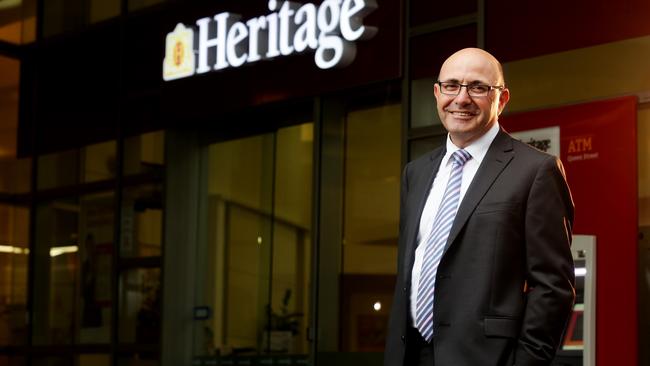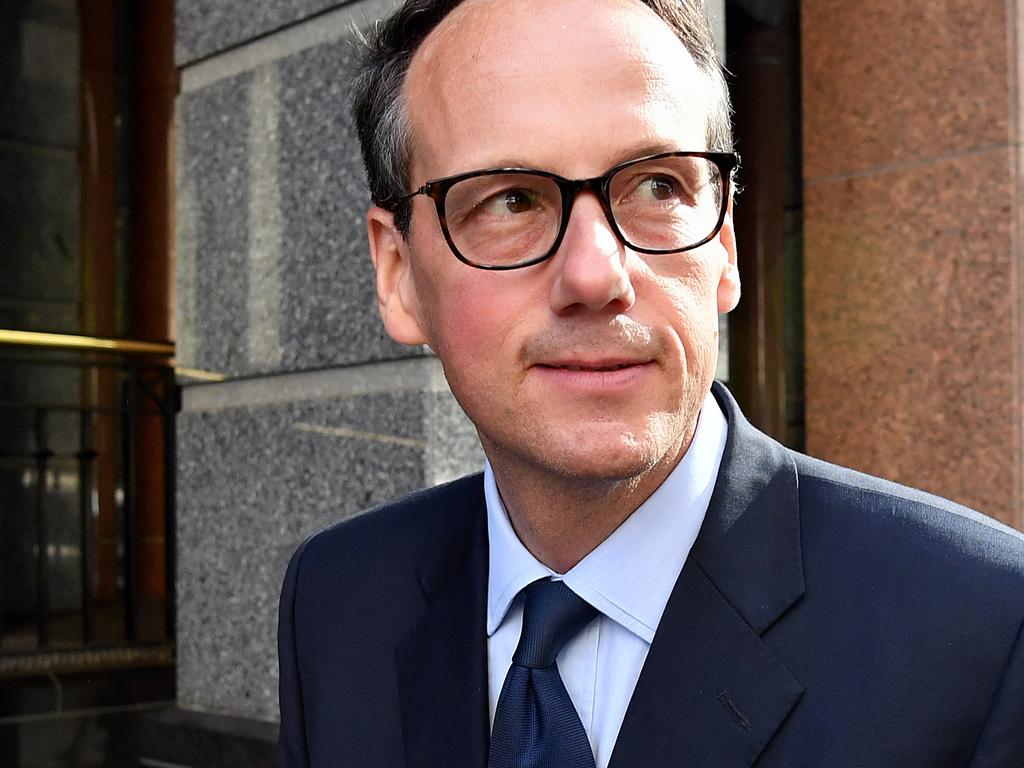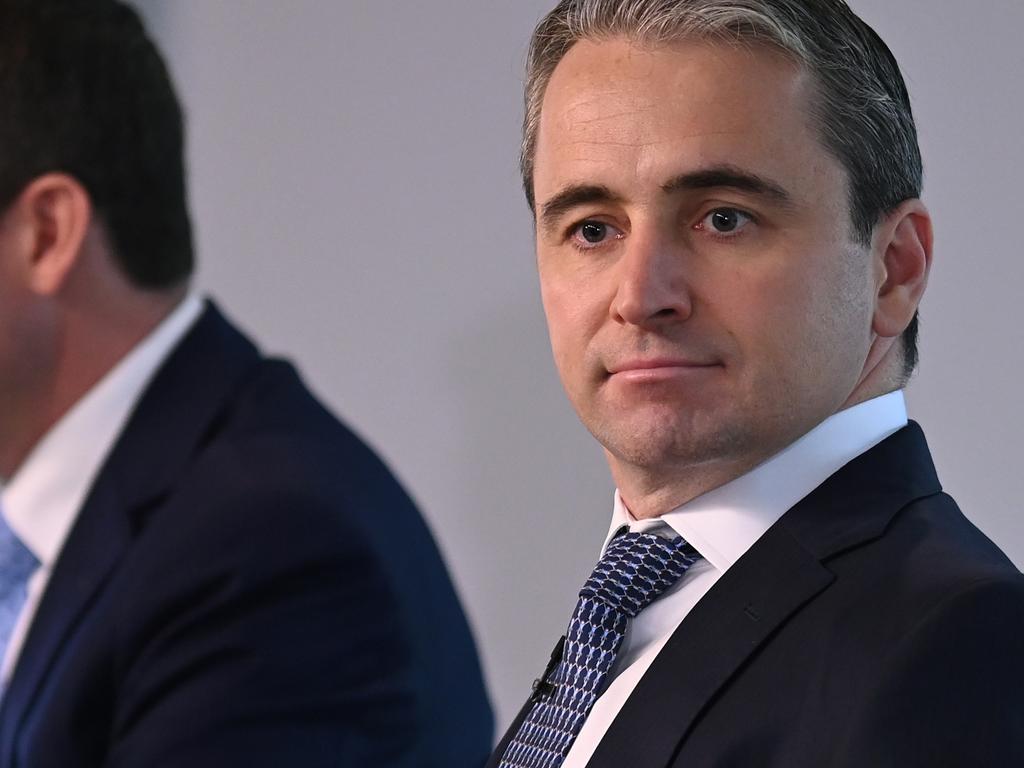Heritage Bank’s Peter Lock tips L-shaped recovery, plans for big digital banking shift
Heritage Bank CEO Peter Lock expects an “L-shaped” rather than a quick economic recovery from COVID-19 in Australia.

Heritage Bank chief executive Peter Lock has revised his business plan and now expects an “L-shaped” economic recovery in Australia as the COVID-19 crisis hinders a Victorian rebound and the global economy grapples with the pandemic’s impact.
Toowoomba-based Heritage is treading cautiously on Australia’s ability to bounce back from COVID-19, because Mr Lock sees the nation’s economic prospects and trade flows as “largely dependent” on the global economy’s health.
Heritage set up a pandemic response group when COVID-19 started to grip Australia, and has made changes to its three-year business plan to account for a marked shift to digital channels.
“The rationale around that is plan for the worst and hope for the best,” he said. He noted COVID-19 had brought forward a wholesale digital banking shift and transformation that had been pegged to be five to 10 years off.
“What COVID has done is thrown that theory out the window … it’s propelled it three to five years forward in a few months.”
The team at the 145-year-old Heritage is also closely monitoring the 5.8 per cent of its loan book total that took up some form of COVID-19 assistance, including loan repayment pauses.
Mr Lock said “reasonably modest” numbers of customers had so far opted to end their repayment deferral of up to six months, even though a lot of them were well ahead of their mortgage obligations.
Banks joined regulators and the federal government this week to alleviate pressure over a looming financial cliff for struggling customers in September, extending the loan deferral period by four months for those unable to restart payments.
Under an extended Australian Prudential Regulation Authority directive, banks are not required to classify the repayment pauses as a period of arrears and therefore do not have to hold more capital against those loans.
The APRA extension means borrowers can access the extended loan repayment deferral for 10 months. That will be in place from the start of a repayment deferral, or until March 31, 2021, whichever comes first.
Australia’s top 20 lenders have approved a combined $266bn of repayment deferrals, or 10 per cent of all loans, according to APRA.
In April, Heritage appointed banking stalwart and former Westpac, St George and Commonwealth Bank executive Peter Clare to its board. Mr Clare labelled the available extension for loan repayment deferrals as a good outcome for borrowers because various industries would emerge from COVID-19 “in different ways, shapes and forms”.
“As a general thematic, what the (banking) industry is trying to do is assist people with cashflow,” he said, noting it gave under-pressure customers the “best opportunity” to come out of the pandemic with their property.
Mr Clare noted the federal government had done a “pretty good job” in stimulating the economy and was likely to announce further targeted measures this year as required.
“The pandemic will pass,” he said, highlighting the 1918 Spanish flu example, which was at its worst for about three years. There had since been significant advances in medicine and health technologies, Mr Clare added.
But loan losses are expected to balloon as the COVID-19 crisis plays out.
In a report on Friday, S&P Global Ratings said it expected annual credit losses at Australian banks to peak at about 85 basis points of gross loans by 2021, nearly six times the historical low seen in fiscal 2019.
“We see a one-in-three possibility that the economic hit for the banking sector could be significantly more severe or prolonged than our base case,” analyst Sharad Jain said.
“Most Australian banks should be able to absorb our forecast rise in credit losses.”
Before the pandemic, Heritage rolled out two new branches in western Sydney and had plans to open as many as 10 in NSW. It sees physical branches as an important part of its overall strategy, but COVID-19 may see it revise branch opening plans in NSW and Victoria.
The bank reported a 5.3 per cent drop in net profit for the six months to December 31, compared to the same period a year earlier, amid sluggish loan growth.
Mr Lock said mortgage growth had picked up in the early months of the year, ahead of COVID-19 setting in. He added that market dynamics were fierce as credit growth slowed.







To join the conversation, please log in. Don't have an account? Register
Join the conversation, you are commenting as Logout